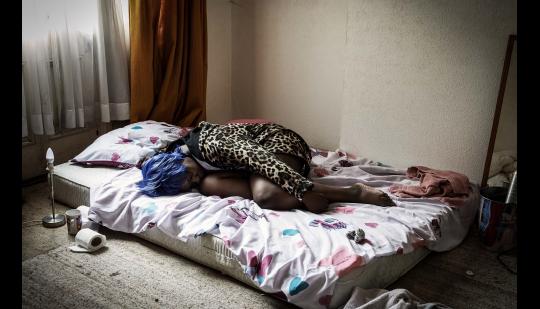NCA’s ‘Invisible People’ exhibition comes to London
Would you recognise the signs of slavery and exploitation if you saw them?
A touring photographic exhibition which aims to help you do just that comes to London this weekend.
Entitled “Invisible People”, the exhibition is part of the National Crime Agency’s campaign to raise awareness of modern slavery and human trafficking.
Slavery was abolished in the UK in 1807 yet more than 200 years on it still exists. Modern slavery is a crime which seeks out the most vulnerable men, women and children and abuses them for criminal profit.
This is not about other people. Modern slaves are in our communities. Sometimes they are right before our eyes and yet we don’t really see them.
The NCA has teamed up with photographers including Juliette Carton, Haitham Naser and multiple award winner Rory Carnegie to recreate the lives of Invisible People and bring them into view as part of this exhibition.
The striking and intimate images encourage the public to truly see what they may have been looking at for years.
The free exhibition can be viewed at the Westminster Abbey on the 10th and 11th March.
This is part of a nationwide tour in 2018, visiting public spaces in cities around the UK.
Photographer Rory Carnegie said:
“Several years ago I worked on an extended project with young refugees, all without parents, helping them to take photographs and to visualise their feelings.
“When I was approached for this exhibition, it seemed like a natural extension of that work.
“What I found initially so complicated was how to visually define and illustrate certain aspects of Modern Slavery. For example, when one sees a picture of a young man or woman picking fruit or working in the fields, they will appear to the viewer exactly that, and not necessarily a victim of modern slavery.
“That image in itself does not explain the disgusting living conditions, the absence of pay and the other iniquitous and evil aspects of modern slavery. These victims might not living in chains, but they are living amongst us.”
Rachel Witkin, Head of Counter Trafficking at Helen Bamber Foundation said:
“At the Helen Bamber Foundation we assist, support and protect hundreds of ‘invisible people’ who have suffered modern slavery to rebuild their lives and sustain recovery. It is easy to overlook this growing crime.
“We need to ask ourselves, is the person who is giving us a manicure, serving a meal or washing our car being abused?
“Invisible People compels us to confront the issue of modern slavery in our society, and our own responsibility to act. We find that when victims are given appropriate care they can find the courage to speak out against their traffickers.”
NCA's 'Invisible People' at Westminster Abbey
Westminster Abbey

Ad
Event has ended
This event ended on Sunday 11th of March 2018
This event ended on Sunday 11th of March 2018
Admission
Free
Free
Tags:
Art
User Reviews
There are no user reviews
